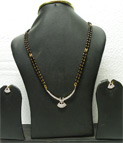What is a shopping cart?
A shopping cart is a software application that typically runs on the computer where your Web site is located (the Web server), and allows your customers to do things such as searching for a product in your store catalog, adding a selected product to a basket, and placing an order for it.
 The shopping cart "integrates" with the rest of your Web site. In other words, there are typically links on your Web pages that customers can click on, and which allow them to perform some of the functions described above. For example, many ecommerce Web sites have a "search" link appearing on every Web page, as part of the navigation area. The link points to a feature (i.e. the search feature) provided by the shopping cart.
The shopping cart "integrates" with the rest of your Web site. In other words, there are typically links on your Web pages that customers can click on, and which allow them to perform some of the functions described above. For example, many ecommerce Web sites have a "search" link appearing on every Web page, as part of the navigation area. The link points to a feature (i.e. the search feature) provided by the shopping cart.
Shopping carts are written in a variety of different programming languages. Some of them provide full access to the "source code", thus allowing experienced programmers to make modifications to the system features, some others don't. Some shopping carts run on Windows Web servers, some on Unix, others on both. In most cases, you can place the shopping cart on your Web server simply by transferring its files there using any FTP software, where FTP stands for File Transfer Protocol.
For example, our shopping cart software - called ProductCart - is a collection of files written in a programming language called Classic ASP, and that you host on a Windows server. Experienced programmers can customize the system as they wish as the source code is included.
How does a shopping cart work?
Typically, all shopping carts share the following structure. A shopping cart normally includes:
- a database that stores information such as product details, customer data, order information, etc.
- a storefront that displays this information to store visitors (e.g. product detail pages, search pages, checkout pages, etc.)
- an administration area that allows you, the store administrator, to manage your store. For example, this is where you add products, set up shipping & payment options, process orders, etc.
Because most of the information is contained in a database, the shopping cart creates pages in "real time" when a customer visits an ecommerce store and requests a specific page. Unlike the HTML pages that likely make up most of your Web site, the shopping cart pages don't exist until a customer requests one. The page is dynamically generated by the Web server by retrieving data from the database. So a store that has 4,000 products, does not actually store 4,000 product pages on the Web server. The pages are created on the fly when a customer visits the store and, for example, looks for a specific product.
ProductCart uses a technology called Active Server Pages to created the store pages from a database. Other shopping carts may use different technology, such as PHP, CGI, Ruby on Rails, or Cold Fusion. The process remains the same. Information is retrieved from a database, and displayed to the customer within the graphical interface that the store administrator has created for the store. Different shopping carts offer store administrators different levels of flexibility in setting up how these pages will eventually look to store visitors (e.g. how products and categories are displayed).
| SHOPPING CENTRE |
|
There is a shopping centre to cater to the day to day needs of the Hostellers as well as day scholars.
Read More |
 |
| Diamonds Studded Mangalsutra Set |
|
There is a shopping centre to cater to the day to day needs of the Hostellers as well as day scholars.
Read More |
 |













